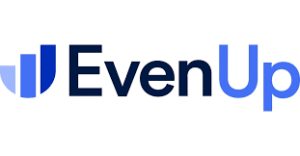San Francisco-based legal AI company EvenUp raised $150 million in Series E funding at over $2 billion valuation from Bessemer Venture Partners, bringing total capital raised to $385 million—one of the largest funding rounds in legal AI as the company reports ARR doubling year-over-year with 90% of new sales from 2025 product launches.
The round included participation from REV \(RELX/LexisNexis venture arm), B Capital, SignalFire, Adams Street, Bain Capital, HarbourVest, Lightspeed, and Broadlight Capital. The investor composition combines legal industry strategics (RELX/LexisNexis) with traditional venture firms, signaling both technology validation and strategic acquisition potential.
Founded in 2019 by Rami Karabibar, Saam Mashhad, and Raymond Mieszaniec, EvenUp serves over 2,000 law firms including 20% of the top 100 personal injury practices in the US. The platform processes 10,000 cases weekly—nearly double from six months prior—and has contributed to over $10 billion in settlements across 200,000 cases.
Karabibar’s framing matters strategically: “Firms are growing revenue without adding staff, while victims secure better results faster.” This positions EvenUp as a revenue enabler rather than efficiency tool—a critical distinction for legal AI adoption.
Traditional legal technology sells on cost reduction: fewer paralegals, less document review time, reduced overhead. These pitches face resistance from partners who view headcount cuts as service quality degradation. EvenUp’s revenue growth message—handle more cases, win larger settlements—aligns with law firm economics where partners earn a percentage of settlements.
The $10 billion in settlements across 200,000 cases suggests an average settlement value of $50,000. If EvenUp’s AI increases settlement values by even 10% ($5,000 per case), firms capture $1,500-2,000 per case (typical 30-40% contingency fees) justifying substantial software costs. This value creation model supports premium pricing unavailable to pure efficiency tools.
Nearly 90% of new sales deriving from 2025-launched products reveals aggressive product velocity and customer willingness to adopt recent features. This contrasts with traditional enterprise software where customers resist upgrades and new feature adoption lags releases by quarters or years.
The rapid adoption suggests either: existing customers purchasing additional modules (expansion revenue indicating strong product-market fit and account management effectiveness), or new customer acquisition driven by recent capabilities unavailable in the initial product (broadening addressable market through feature expansion).
The newly announced Mirror Mode—allowing firms to upload winning drafts and generate customized versions matching tone, structure, and legal precision—represents template-based AI generation. This capability addresses law firm workflow reality: partners develop case strategies and junior associates replicate approaches across similar cases. Automating this replication reduces associate hours while maintaining partner strategy control.
Serving 20% of top 100 personal injury firms indicates strong high-end market penetration. These firms handle highest case volumes and settlements, generating maximum revenue per customer. However, this concentration creates expansion challenges and portfolio risk.
The 2,000+ total law firm customer base suggests substantial mid-market and small firm adoption beyond top-tier practices. Personal injury law includes thousands of small firms (1-10 attorneys) handling local cases. These practices lack resources for extensive technology evaluation and implementation, requiring different sales and support models than enterprise deals.
The 10,000 weekly case volume doubling in six months validates rapid adoption but lacks context for unit economics. Does EvenUp charge per case processed, per user subscription, or percentage of settlement increases? Pricing model determines scalability and margin structure.
REV’s participation (RELX/LexisNexis venture arm) signals potential acquisition interest from legal industry incumbent. LexisNexis dominates legal research with embedded distribution across law firms. Acquiring EvenUp would provide AI capabilities complementing existing offerings while preventing competitive disruption.
However, $2 billion valuation at Series E suggests EvenUp targets an independent path to public markets rather than strategic acquisition. For comparison, legal tech IPOs include Clio (rumored $2-3 billion target valuation), CS Disco (acquired at $1 billion in 2024), and Onit (acquired by private equity at undisclosed valuation).
The diverse venture investor base—Bessemer, Bain Capital, Lightspeed—provides multiple exit options. These firms maintain public market relationships and can support the IPO process, while also facilitating strategic acquisition negotiations if founders pursue sale.
Legal AI competitors include Harvey (raised $100+ million, targets large law firms), Casetext (acquired by Thomson Reuters for $650 million in 2023), and various document automation tools. EvenUp’s personal injury focus creates vertical specialization defensibility.
Personal injury law operates differently than corporate litigation or transactional work. Cases follow predictable patterns (car accidents, slip-and-falls, medical malpractice), settlements depend on medical record interpretation and precedent analysis, and contingency fee structures align attorney incentives with settlement maximization.
This specialization allows EvenUp to build proprietary training data (hundreds of thousands of injury cases, millions of medical records) that generalist legal AI cannot easily replicate. The “Piai” proprietary model suggests custom AI development beyond fine-tuning general-purpose LLMs.
Legal AI faces unique risks absent in other enterprise software categories. Incorrect case strategy recommendations, flawed settlement valuations, or erroneous legal research could result in malpractice claims against law firms using the platform.
EvenUp’s positioning as “AI partner” rather than automation tool suggests human-in-the-loop design where attorneys maintain decision authority. This approach balances AI assistance with professional responsibility requirements, but limits full automation benefits.
The company likely maintains errors and omissions insurance and contractual limitations of liability. However, high-profile failures could generate negative publicity affecting adoption regardless of legal responsibility allocation.
Raising $385 million total capital through Series E suggests either substantial customer acquisition costs, aggressive R&D investment, or extended path to profitability. For comparison, enterprise SaaS companies typically achieve profitability before Series D/E rounds.
The doubling ARR metric (actual figures undisclosed) indicates strong growth but doesn’t address profitability timeline. Legal AI requires continuous model training, data acquisition, regulatory compliance monitoring, and customer success resources—costs that may scale with revenue rather than achieving software-typical gross margins.
For late-stage investors, EvenUp’s Series E positioning requires demonstrating a clear path to profitable growth or exit liquidity within the fund timeline. The $2 billion valuation implies expectation of $4-6 billion exit (2-3x return) through IPO or strategic acquisition.
The US personal injury market generates an estimated $50+ billion in annual settlements. If EvenUp captures even 10% market share at 5-10% of settlement value (through increased settlements or efficiency gains), potential annual revenue exceeds $250 million justifying $2 billion valuation at reasonable multiples.
However, expansion beyond personal injury remains uncertain. Can EvenUp’s technology transfer to other legal practice areas, or does vertical specialization limit the addressable market? The company’s strategy appears focused on dominating personal injury before considering adjacencies.








